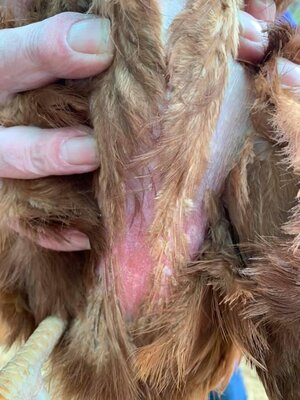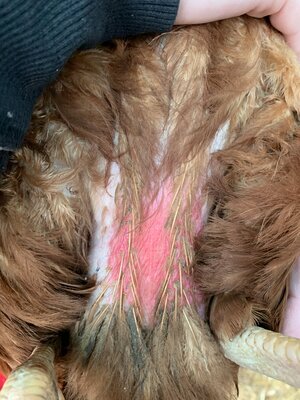JensHens1987
Chirping
- Aug 20, 2019
- 37
- 59
- 89
My Rhode Island Red has a very red and irritated looking belly. First noticed in early October. She is just a year old so assumed it was from molt, but looks worse now. No noticeable mites... the rest of the flock is happy and healthy (aside from a few bumblefoot issues). I put some Vaseline on it just because it looked so sore, but doesn’t seem to bother her.
Could this be a contact dermatitis?
Pecking/Plucking?
Allergy?
Mite or bug? If so how should I treat?
she is otherwise happy, active, eats and drinks well. Good egg layer.
Could this be a contact dermatitis?
Pecking/Plucking?
Allergy?
Mite or bug? If so how should I treat?
she is otherwise happy, active, eats and drinks well. Good egg layer.





